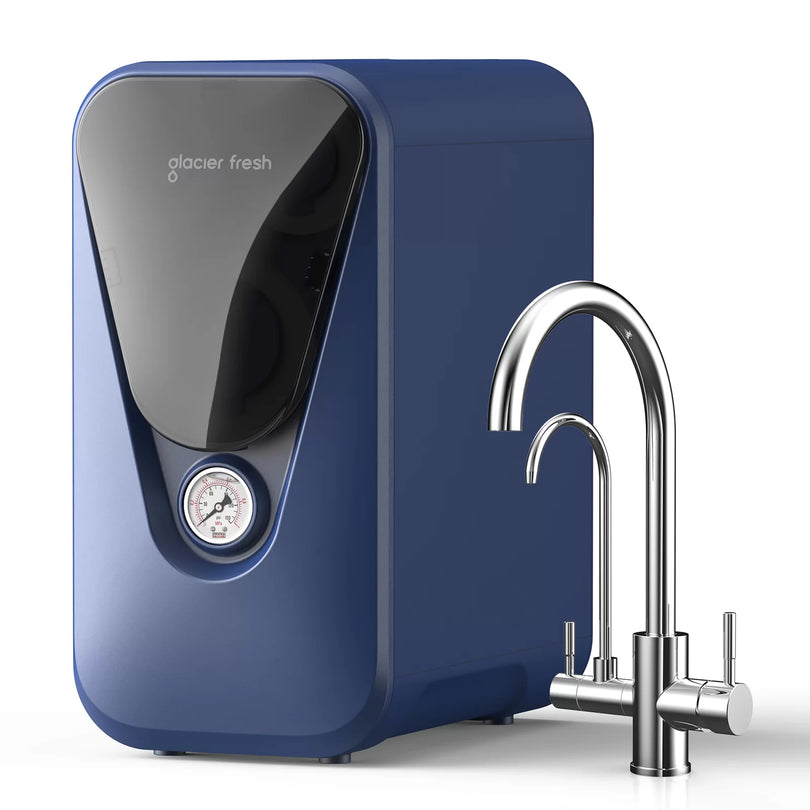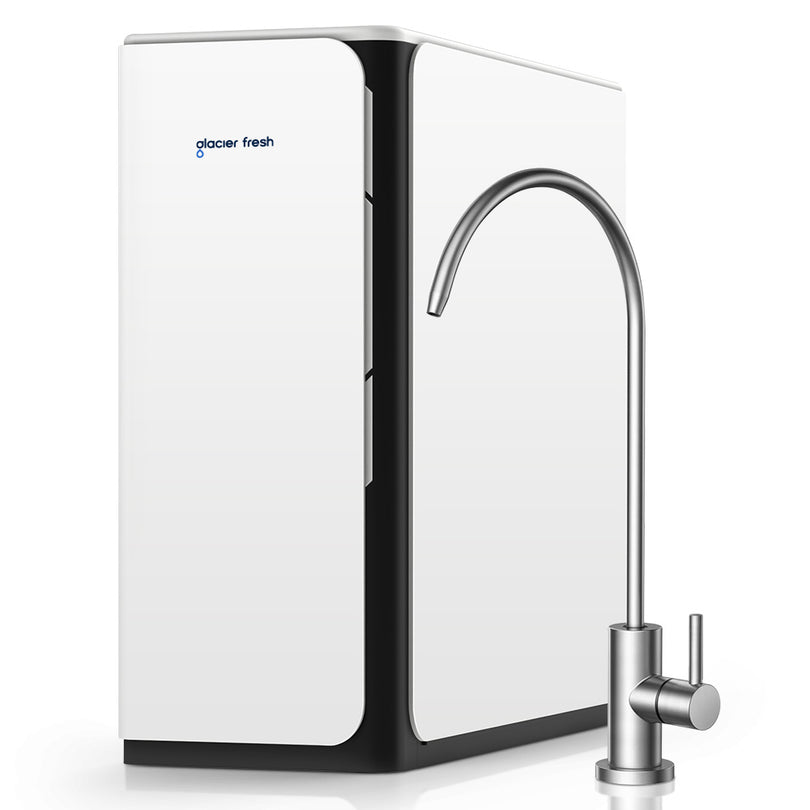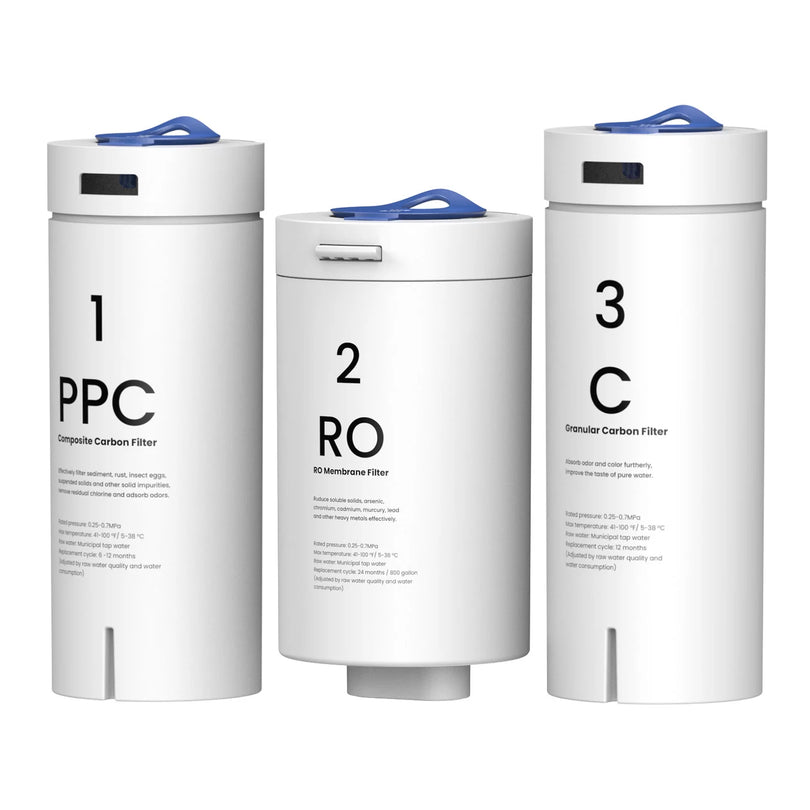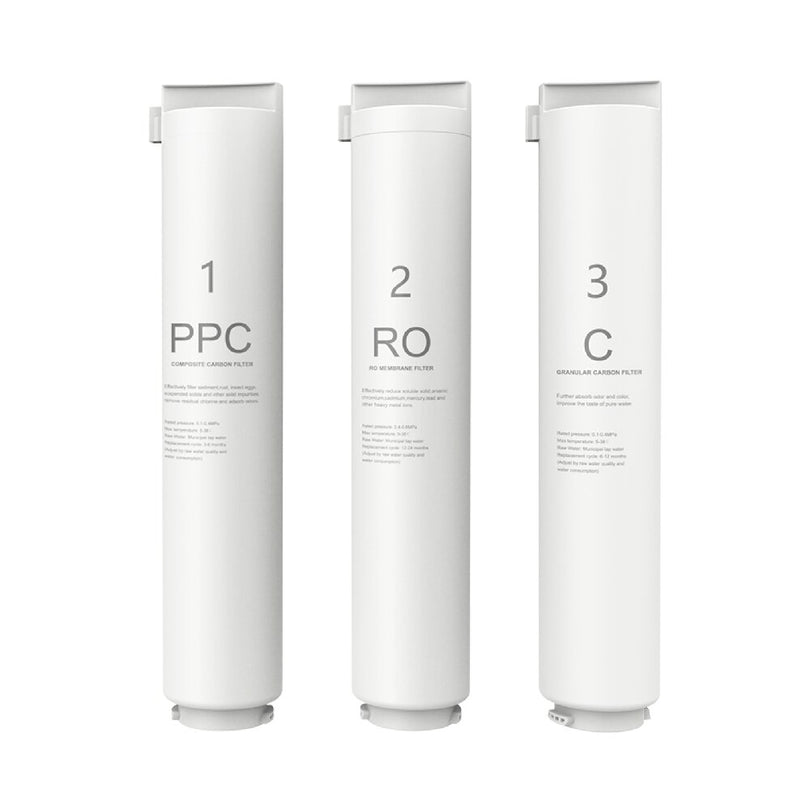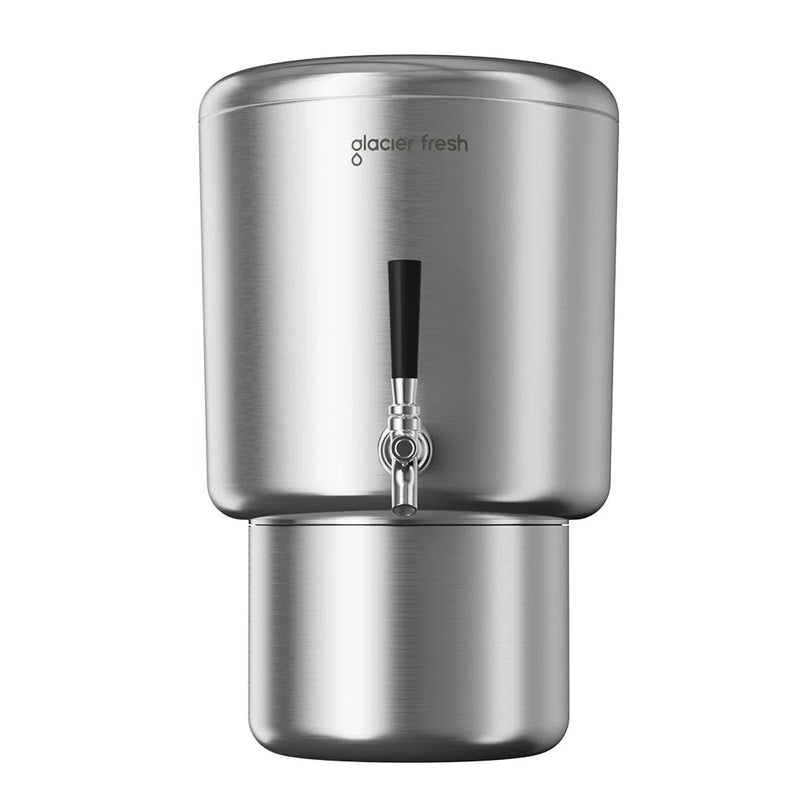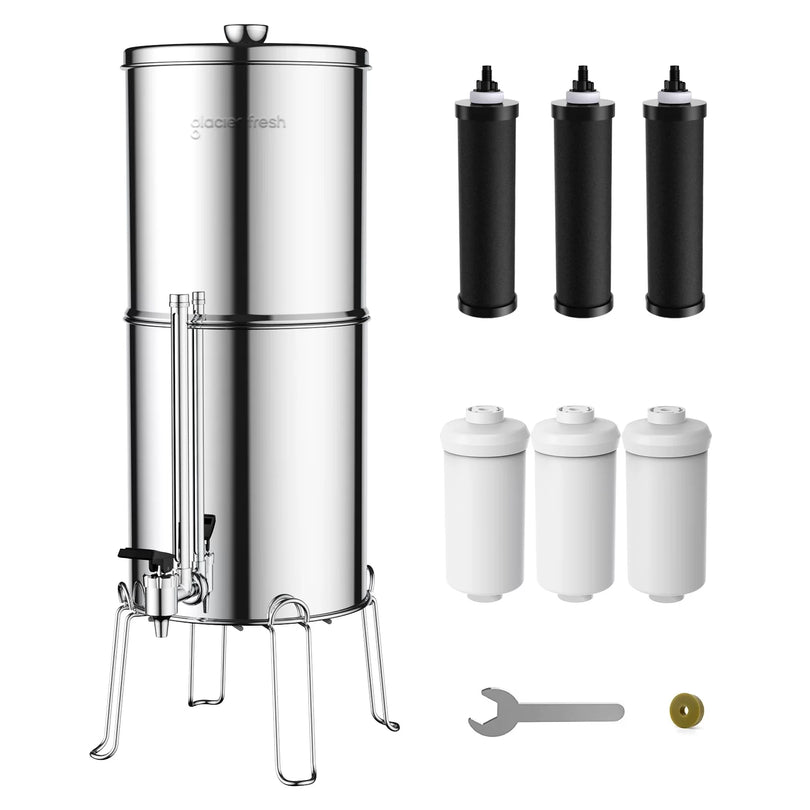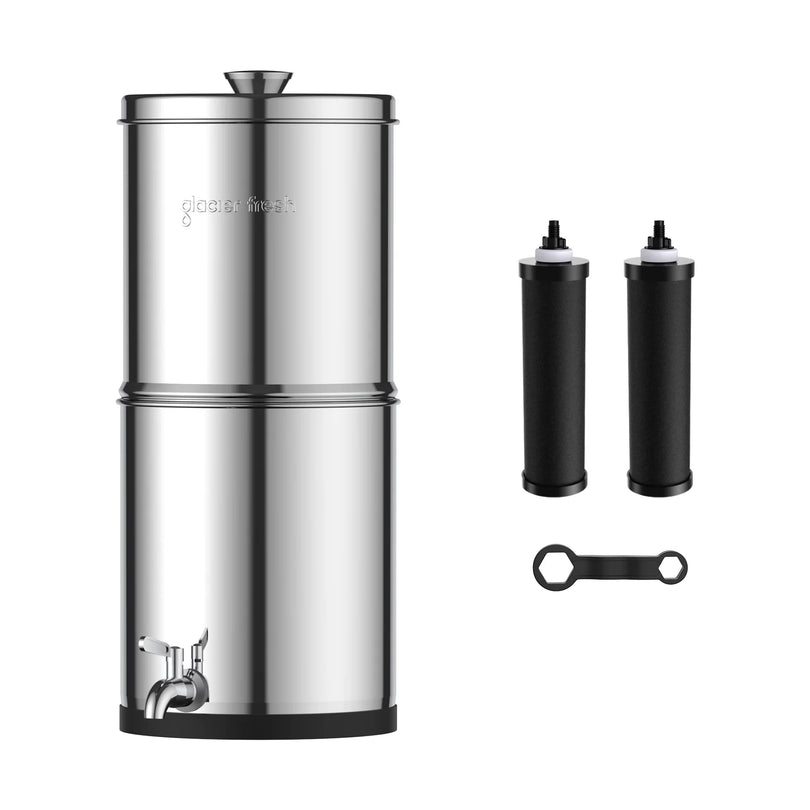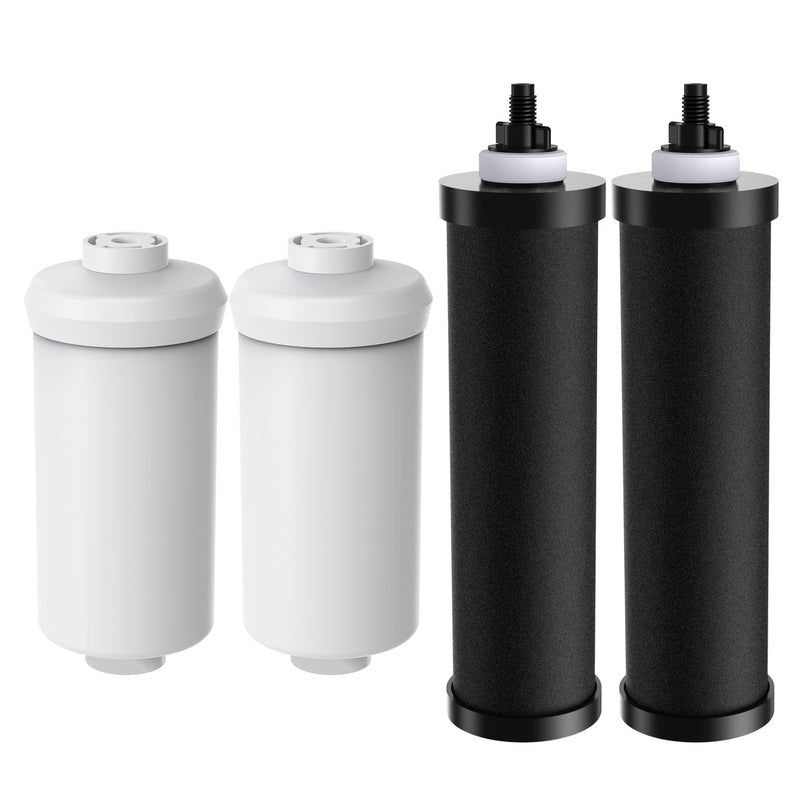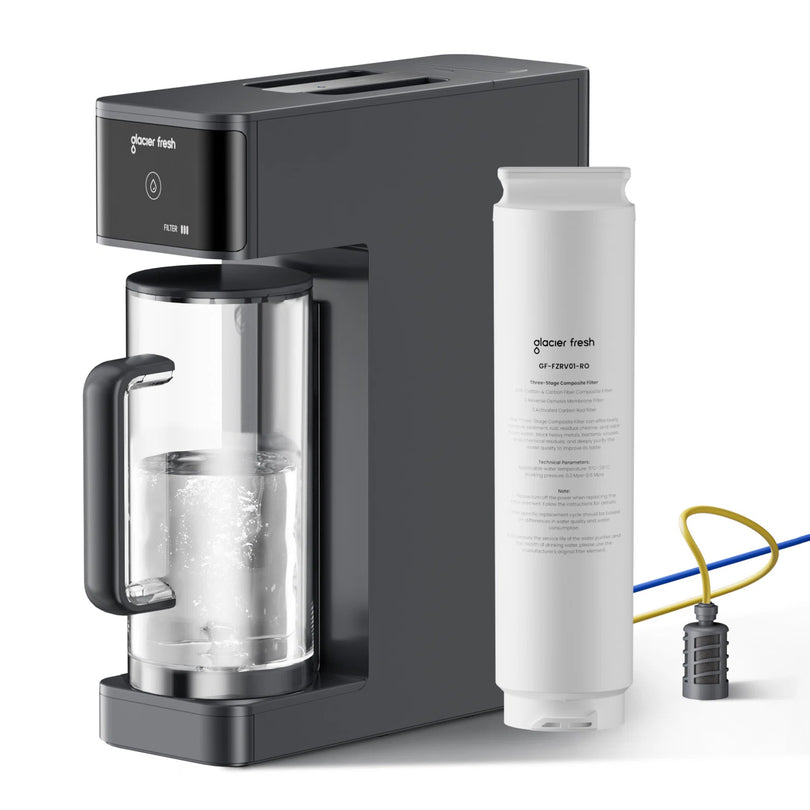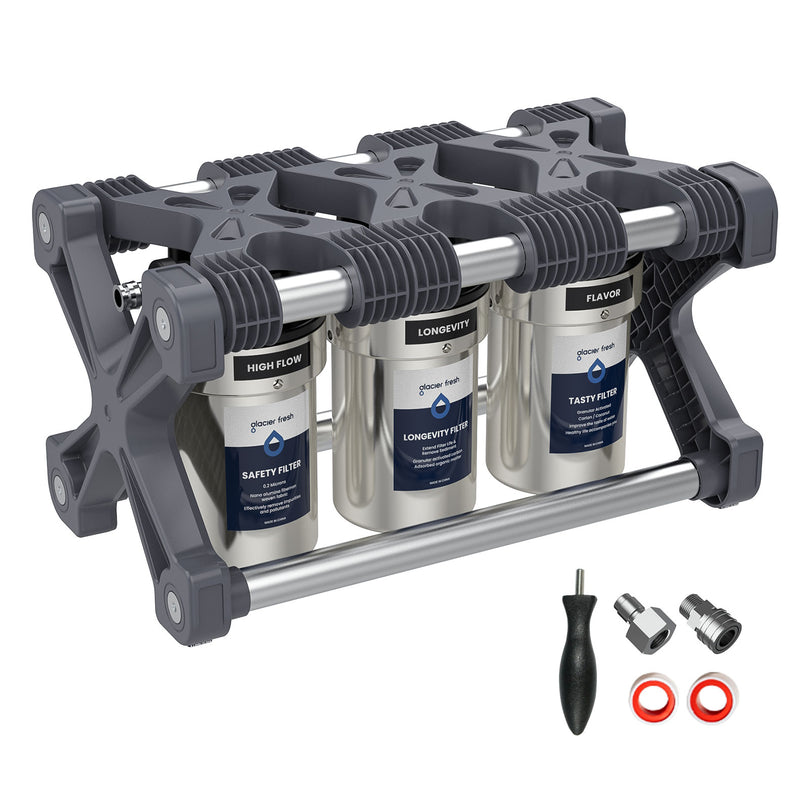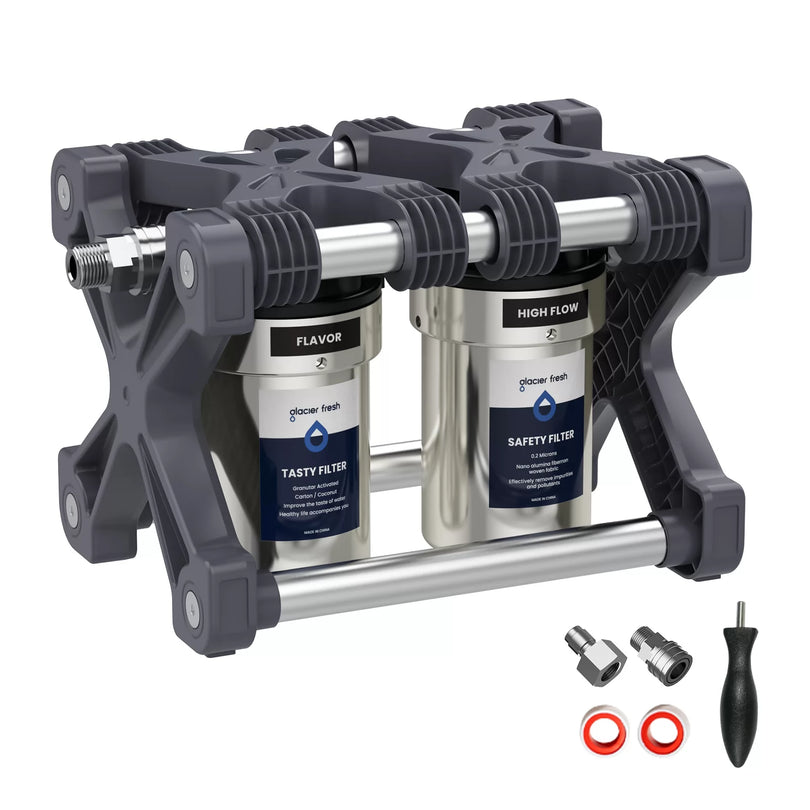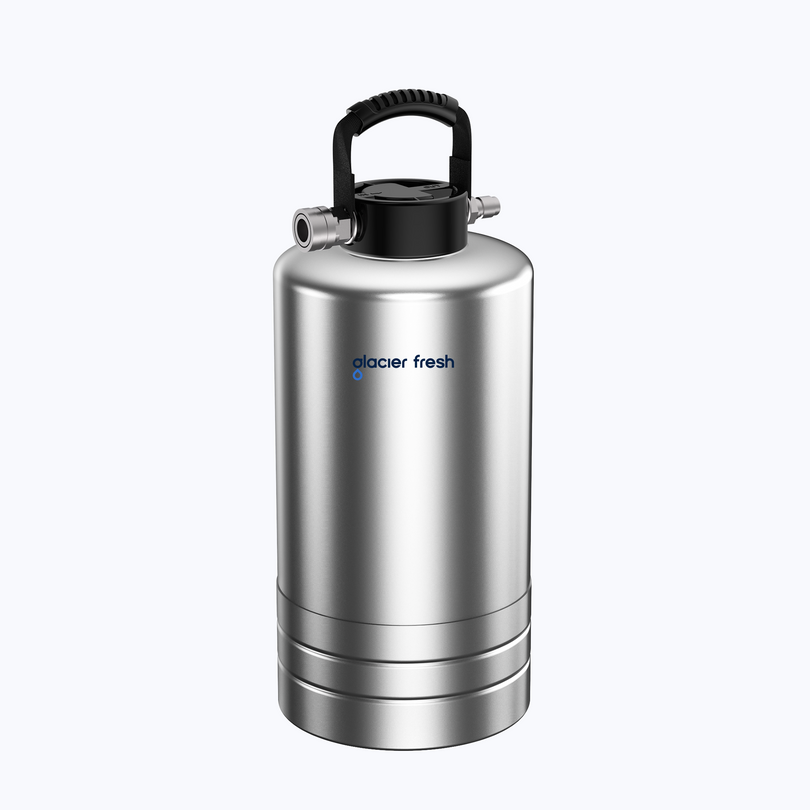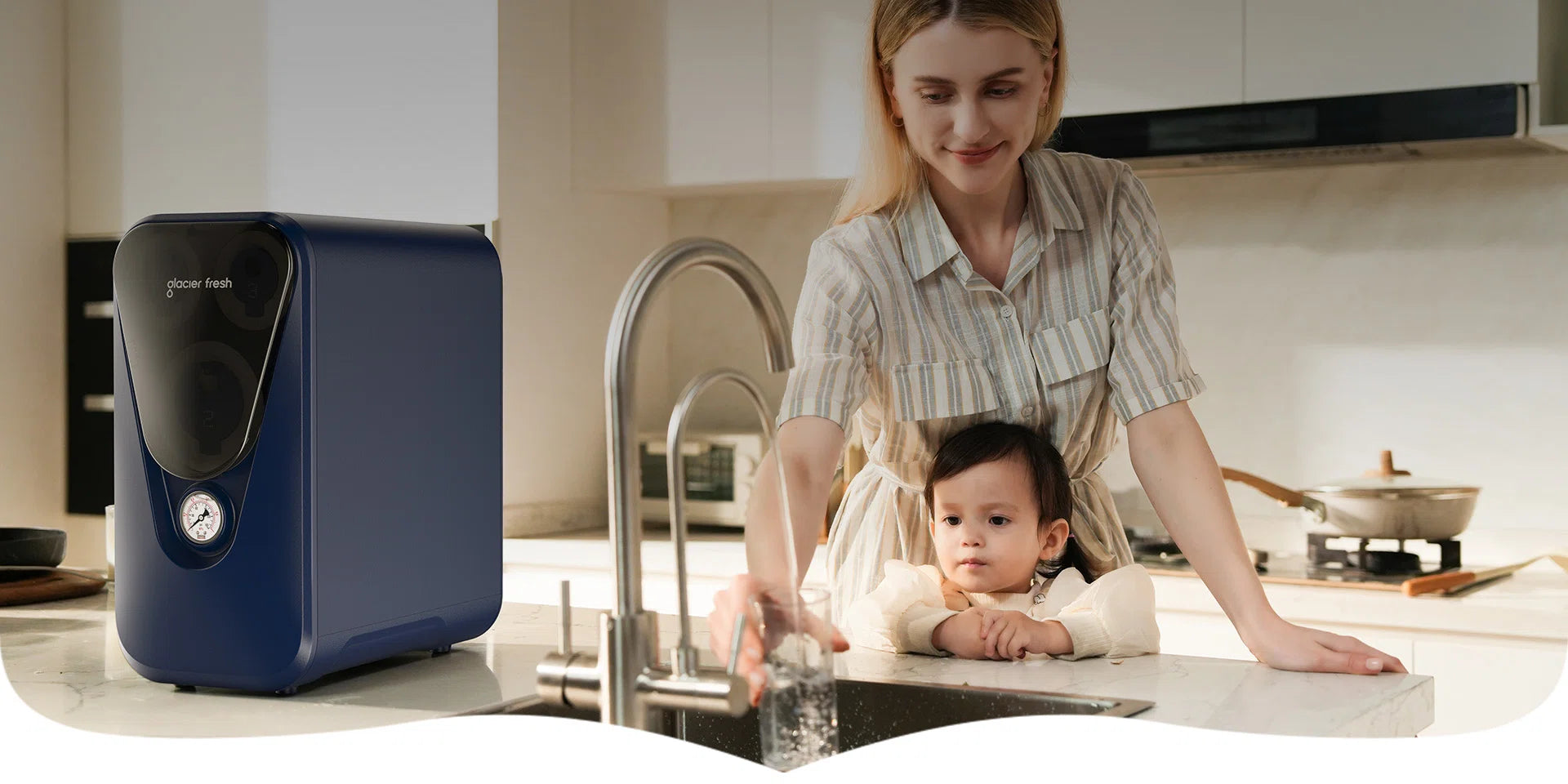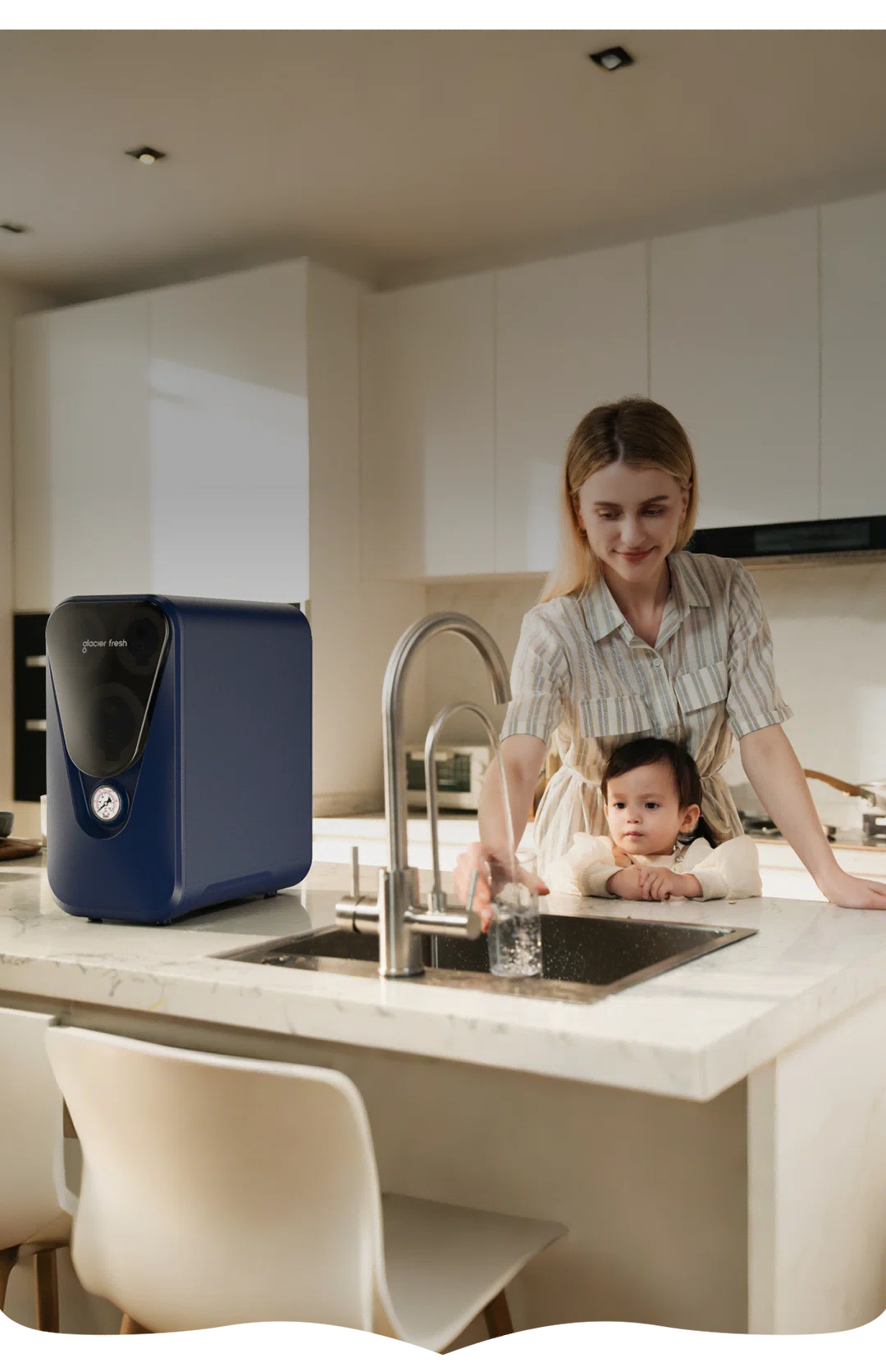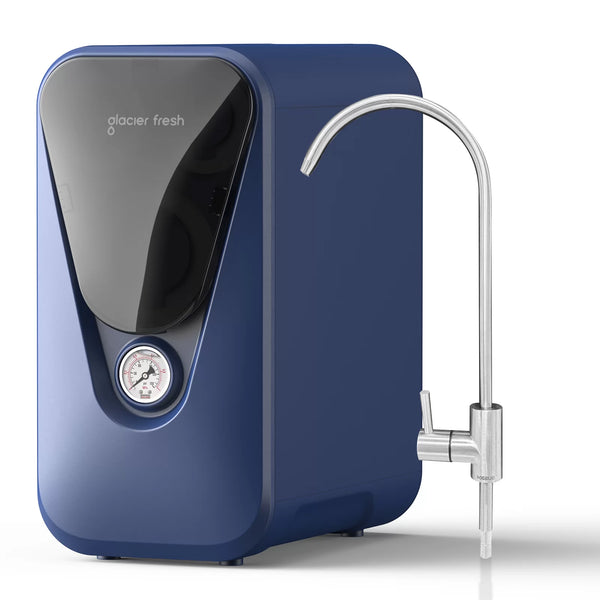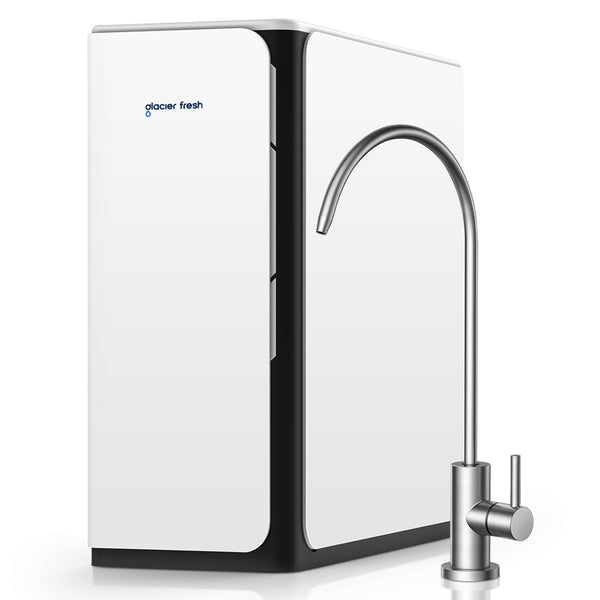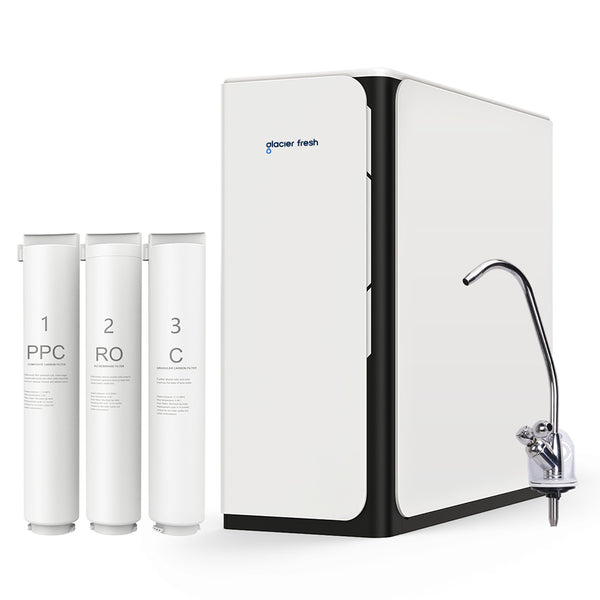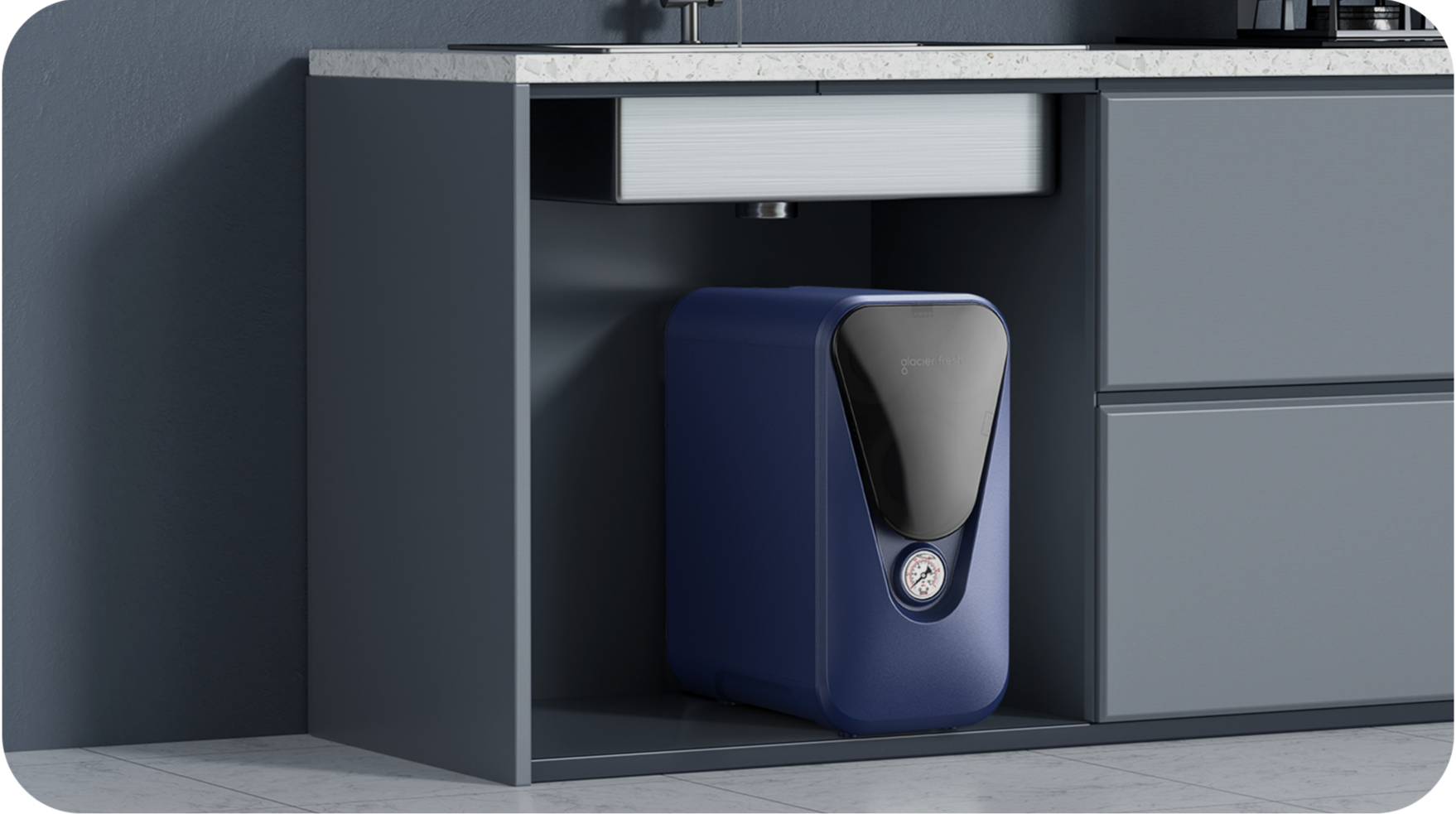Reverse Osmosis Systems
A reverse osmosis system removes sediment and chlorine from water with a pre-filter before it forces water through a semipermeable membrane to remove dissolved solids. After water exits the RO membrane, it passes through a post-filter to polish the drinking water before it enters a dedicated faucet.
GlacierFresh U01 Under Counter Water Purifier System is our first-generation Under Sink Water Filter machine, 400GPD, suitable for small homes or apartments.
GlacierFresh U03 no power reverse osmosis system item is the second generation Under Sink RO System machine, 800GPD, Suitable for places with high local water pressure or frequent power outages. providing you with fresh, clean water quickly.
GlacierFresh-U03 E800G RO System is our third-generation Under Sink RO System, equipped with a power adapter and a built-in booster pump, suitable for areas with low water pressure.
What YouTube Creators are saying
See which ones are helpful to you
Understanding RO Systems
- A reverse osmosis system removes sediment and chlorine with a pre-filter, then forces water through a semipermeable membrane to remove dissolved solids. The water then passes through a post-filter for final polishing before reaching your dedicated faucet.
- RO systems remove up to 99% of dissolved solids including heavy metals, fluoride, arsenic, lead, chlorine, nitrates, sulfates, and other harmful contaminants, giving you the purest drinking water.
- RO water tastes noticeably cleaner and fresher because it removes chlorine, minerals, and other substances that affect taste and odor.
Product Selection & Comparison
- The U01 (400GPD) is perfect for small homes or apartments with 1-3 people. The U03 (800GPD) is ideal for larger families or areas with low water pressure, as it includes a built-in booster pump for faster water production.
- Tankless systems like ours provide fresh filtered water on demand without a bulky storage tank, saving space under your sink while delivering faster flow rates and eliminating the risk of stagnant water.
- If you have low water pressure (below 40 PSI) or want faster water flow, choose the U03 E800G with the built-in booster pump. If you have normal water pressure, the standard U03 works great.
Installation & Requirements
Our under sink RO systems are designed for easy DIY installation with included instructions and all necessary fittings. Most customers complete installation in 1 hours, or you can hire a plumber.
The U01 and standard U03 models require no electricity and work purely on water pressure. The U03 E800G model requires a power adapter for its booster pump.
- The U03 E800G model with the built-in booster pump is specifically designed for low water pressure areas. The standard models work best with normal household water pressure (40+ PSI).
- Yes, RO systems include a dedicated faucet that installs on your sink or countertop for dispensing purified drinking water.
Performance & Capacity
- The U01 produces 400 gallons per day (GPD), while the U03 produces 800 GPD - more than enough for most households' drinking and cooking needs.
- Our tankless systems provide continuous flow without waiting for a tank to refill. The 800GPD models fill a glass in seconds.
Yes, RO systems produce wastewater as part of the filtration process, typically at a 1:1 or 2:1 ratio. This is normal and necessary for effective filtration. Our systems are designed for efficiency.
Maintenance & Filter Replacement
- Pre-filters and post-filters should be replaced every 6-12 months depending on water quality and usage. The RO membrane typically lasts 1-3 years.
- Replacement filters are affordable and readily available. Regular maintenance ensures optimal performance and water quality.
- We recommend changing filters based on the schedule (every 6-12 months), or sooner if you notice reduced water flow or changes in water taste.
Water Quality & Health
- Absolutely! RO water is among the purest drinking water available, removing 99% of contaminants while being completely safe and healthy.
- Yes, RO removes most minerals along with contaminants. You can get minerals from a balanced diet, or add a remineralization filter if desired.
- Yes! RO water is excellent for cooking, making coffee and tea, ice cubes, and any recipe where water quality matters.
Practical Considerations
- Our tankless design is compact and space-efficient, typically requiring about 14-16 inches of width and fitting easily under most sinks.
- Yes, the U03 is specifically designed for small homes and apartments. It's easy to install and can be removed if you move.
- Choose the U01 or standard U03 models - they require no electricity and will continue working during power outages as long as you have water pressure.
A water filter for a sink works by pushing tap water through one or more filtration stages to remove impurities and improve taste. Most models start with a sediment layer to capture dirt and rust, followed by activated carbon that reduces chlorine, odors, and chemicals. More advanced options, like under-sink reverse osmosis systems, use a fine membrane that blocks heavy metals, fluoride, and other harmful substances, leaving you with safe and great-tasting water straight from your faucet.
An efficient Ro water filter not only helps conserve water but also lowers utility costs over time by minimizing waste. Systems with better Pure to Drain Rates are more sustainable and cost-effective for daily use, especially in areas with limited water resources. When choosing a filtration system, always check this rate, as it directly reflects the overall performance and efficiency of the Ro water filter. By selecting a model with a strong ratio, you're investing in clean, sustainable water without unnecessary waste.
The primary advantage of an under sink reverse osmosis water filter is its exceptional ability to remove a wide spectrum of harmful contaminants, including lead, fluoride, chlorine, heavy metals, and even certain bacteria. This filtration process forces water through a semi-permeable membrane, allowing only pure water molecules to pass through. As a result, an under sink reverse osmosis water filter delivers clean, safe, and great-tasting drinking water directly from your tap, making it a reliable solution for households concerned about water quality.
Beyond purity, the under sink reverse osmosis water filter offers unmatched convenience and long-term value. Installed discreetly under your kitchen sink, it provides a continuous supply of filtered water without the need for bulky bottles or countertop units. Over time, using an under sink reverse osmosis water filter helps reduce plastic waste and saves money compared to purchasing bottled water. For those seeking a sustainable, health-conscious, and cost-effective water solution, this system stands out as one of the best choices available.
A RO water filter operates by forcing water through a semipermeable membrane that blocks particles as small as 0.0001 microns. This allows a RO water filter to remove contaminants that conventional carbon or sediment filters can’t handle—like arsenic, fluoride, nitrates, and total dissolved solids (TDS). Most standard filters only remove chlorine, sediment, and larger particles, but a RO water filter delivers much more thorough purification.
Moreover, a RO water filter often comes as a multi-stage system, typically including pre-filters, a reverse osmosis membrane, and a post-carbon filter for polishing. This layered design ensures both chemical and microbial safety. While standard filters are great for basic filtration, a RO water filter is ideal for people who want ultra-pure water for drinking, cooking, or even aquariums.
Installing an under-sink water filter system usually takes 1 to 2 hours, depending on your plumbing experience and the complexity of the system. Most under-sink water filter system packages include detailed instructions and all necessary parts, allowing for a DIY-friendly setup. You'll typically need a drill, a wrench, and a bit of patience to connect the system to your cold water line and install a dedicated faucet if required.
For those who prefer not to tinker with plumbing, hiring a professional ensures a clean, leak-free setup and takes even less time, often under an hour. Once installed, an under-sink water filter system is out of sight and requires minimal maintenance. Whether you’re in a rental or a permanent home, an under-sink water filter system offers a great balance of convenience and performance without cluttering your countertop.
The RO membrane in an under-sink RO system typically lasts 2 to 3 years, while the pre-filters and post-filters need replacement every 6 to 12 months, depending on water quality and usage. Regular maintenance of your under-sink RO system is essential to prevent clogging, bacterial buildup, and reduced efficiency. Some units come with reminders or indicators to help you keep track of filter changes.
If you notice a drop in water pressure or a change in taste, that’s often a sign your under-sink RO system needs attention. Investing in a system with easy-to-change cartridges can save time and effort. By keeping your under-sink RO system in top condition, you'll ensure consistent water purity and extend the life of the entire system.
RO filtration ensures that lead, chlorine, fluoride, and other impurities are removed from your drinking water. Reverse Osmosis water filtration is unrivaled when it comes to removing impurities from water in an efficient, cost-effective method.
Most under-sink water filter cartridges need to be replaced every 6 to 12 months, depending on your water quality and daily usage. Failing to replace the under-sink water filter on time can lead to reduced effectiveness and poor-tasting water. High-sediment water may clog the filter faster, shortening its lifespan.
Some advanced under-sink water filter models come with filter life indicators or timers to help you stay on schedule. Regular replacement ensures optimal filtration and extends the life of your entire system. Keeping your under-sink water filter updated guarantees consistent water quality and peace of mind.
Yes, many RO water filter systems are designed for easy home installation, even by individuals with minimal plumbing experience. These kits usually include color-coded tubing, quick-connect fittings, and clear instructions. With some basic tools and patience, you can install a RO water filter in about 1 to 2 hours.
However, if you’re not comfortable working under the sink or want a guaranteed leak-free setup, a plumber can professionally install the RO water filter quickly. Once installed, the RO water filter operates automatically and only requires periodic filter replacements. The ease of use and high performance make it a practical choice for many households.
A RO water filter is perfect for families and individuals who want safe, healthy drinking water. Tap water often contains chlorine, heavy metals, or dissolved solids that affect taste and health. For children, the elderly, or those with weaker immunity, RO water systems offer strong protection by removing up to 99% of contaminants. They’re also useful for private wells, where nitrates, bacteria, or excess minerals may exist. Beyond health, RO filters improve taste for cooking, coffee, or daily drinking, while reducing bottled water costs and waste.
They also suit people with dietary or medical needs who must avoid excess minerals. Eco-conscious users value their sustainability, and RV owners or campers rely on portable RO units for safe water anywhere. Even small cafés use them to enhance beverage quality. In short, RO water filters serve anyone who values health, convenience, and cleaner living.
RO filtration ensures that lead, chlorine, fluoride, and other impurities are removed from your drinking water. Reverse Osmosis water filtration is unrivaled when it comes to removing impurities from water in an efficient, cost-effective method.
The most effective under-sink water filter is usually a reverse osmosis (RO) system. This type of filtration can remove up to 99% of contaminants, including chlorine, lead, fluoride, arsenic, PFAS, and microplastics. Unlike basic carbon filters, RO systems use a semi-permeable membrane that effectively separates dissolved solids and chemicals from the water, providing clean, fresh-tasting drinking water straight from your tap.
A high-quality under-sink water filter often features multiple filtration stages, such as sediment and activated carbon filters, to enhance taste and eliminate odors. It’s also compact, easy to install, and ideal for households seeking a long-term solution to improve both safety and taste. With regular maintenance and timely filter replacement, this system ensures a steady supply of pure water every day.
Installing an under-sink reverse osmosis water filter is straightforward. The GlacierFresh U30 under-sink reverse osmosis system typically takes only half an hour to install. First, turn off the cold water supply valve and clear the space beneath the sink. Connect the inlet fitting to the cold water line, then attach the inlet hose, outlet hose, and drain hose according to the manual. If the system includes a dedicated faucet, drill holes in the sink or countertop and secure it firmly. Tighten all connections to prevent leaks.
The GlacierFresh U03 Under-Sink Reverse Osmosis Water filter offers both drilled and drill-free installation options. The Standard Edition includes a dedicated faucet, while the Elite Edition connects directly to your existing kitchen faucet—eliminating the need for additional drilling, saving labor costs, and maintaining a cleaner countertop. After installation, reopen the water supply, check for leaks, and allow the system to flush for several hours to remove air and carbon residue. Your under-sink reverse osmosis water purifier will deliver clean, great-tasting drinking water directly from your faucet.
An under-sink RO system typically costs between $150 and $600, depending on the model, capacity, and design. Basic 4- or 5-stage systems are more affordable, while advanced tankless under-sink RO systems with smart indicators, high flow rates, and better water-saving technology are priced higher. For instance, the GlacierFresh U03 800G RO System offers strong filtration and efficiency at a mid-range price point.
In addition to the initial purchase, you should consider maintenance costs such as filter and membrane replacements—usually every 6 to 12 months for filters and every 2 to 3 years for membranes. Over time, the cost is offset by the savings from avoiding bottled water, making it a practical and eco-friendly investment for your home.
A modern under-sink RO system is far more efficient than older systems. Traditional RO filters used to waste 3–5 gallons of water for every gallon of purified water, as excess water flushed out impurities during filtration. However, newer designs have significantly reduced this ratio with advanced membranes, improved flow systems, and water-saving valves.
Most high-efficiency under-sink RO systems today achieve a 3:1 pure-to-drain ratio—producing three gallons of purified water for every one gallon wasted. Some even include built-in pressure pumps to further minimize water loss. While some wastewater is inevitable in the RO process, the benefits of cleaner, healthier drinking water and reduced chemical exposure make it a worthwhile and sustainable choice for most households.

